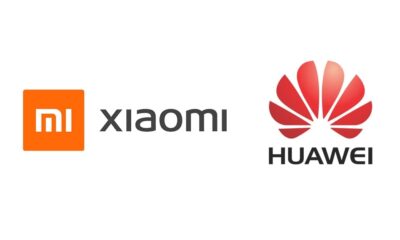Comparison
Battery Percentage Comparison: iOS 16, Android 13, EMUI 12, One UI 5, MIUI 13, OxygenOS 13
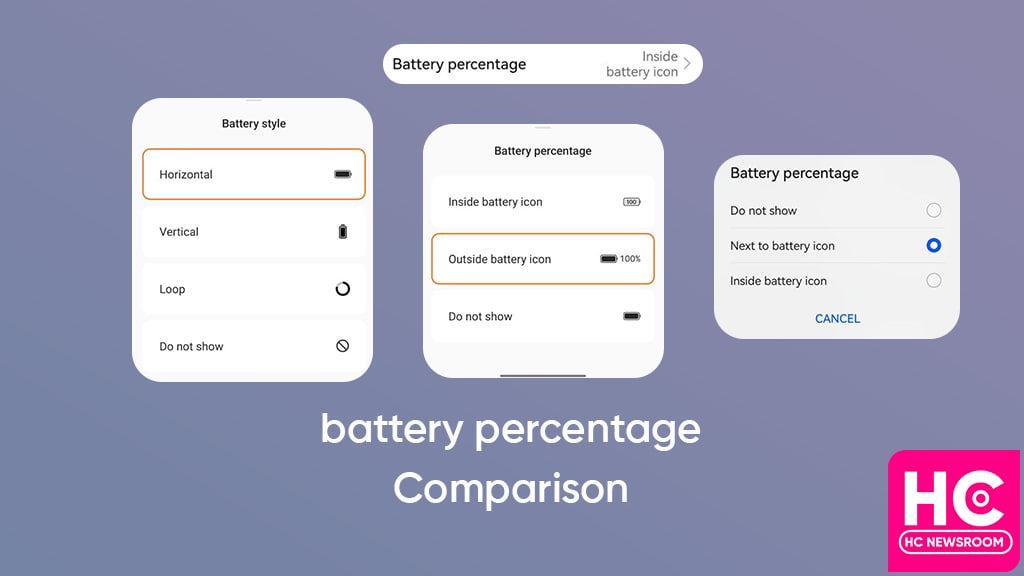
The battery percentage is an essential feature and it’s available on almost all Android and even iOS devices. So today, we’ll take a deep look into the battery percentage icon comparison between Apple’s iOS 16, Google Android 13, Huawei EMUI 12 and HarmonyOS, Samsung One UI 5, Xiaomi MIUI 13, and OnePlus OxygenOS 13.
Battery icon:
A battery percentage is a number (numeric) that allows you to view the accurate battery level on your smartphone. Some phones don’t enable this feature by default.
Comparison:
For this comparison, we’ll look into the appearance, and how the percentage text appears around or inside the battery icon. Also, we’ll look into the additional options that each of these software offers to enhance the user experience.
iOS 16:
The notch on iPhone has forced Apple to oust battery percentage from its mobile software but iOS 16 has brought back this feature ono place. The battery icon is placed in landscape position including percentage text inside the battery icon. Both of these elements change colors into light and dark appearances based on the screen colors. It looks good.
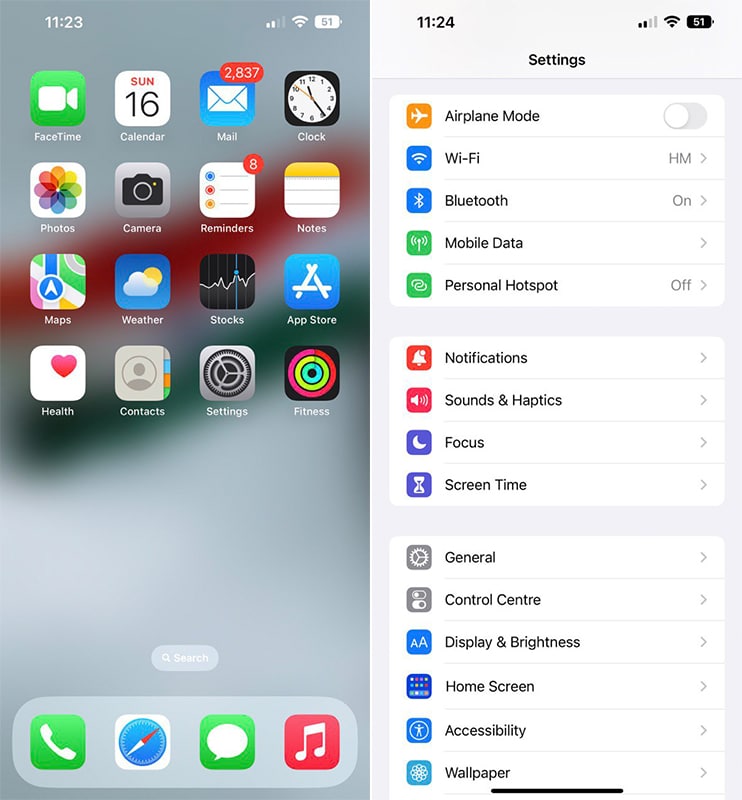
Android 13:
The stock Android 13 has its own way of showing the battery percentage label on the right side of the battery icon (vertical). Yeah, it looks good. However, there’s no option of showing the battery percent inside the icon.
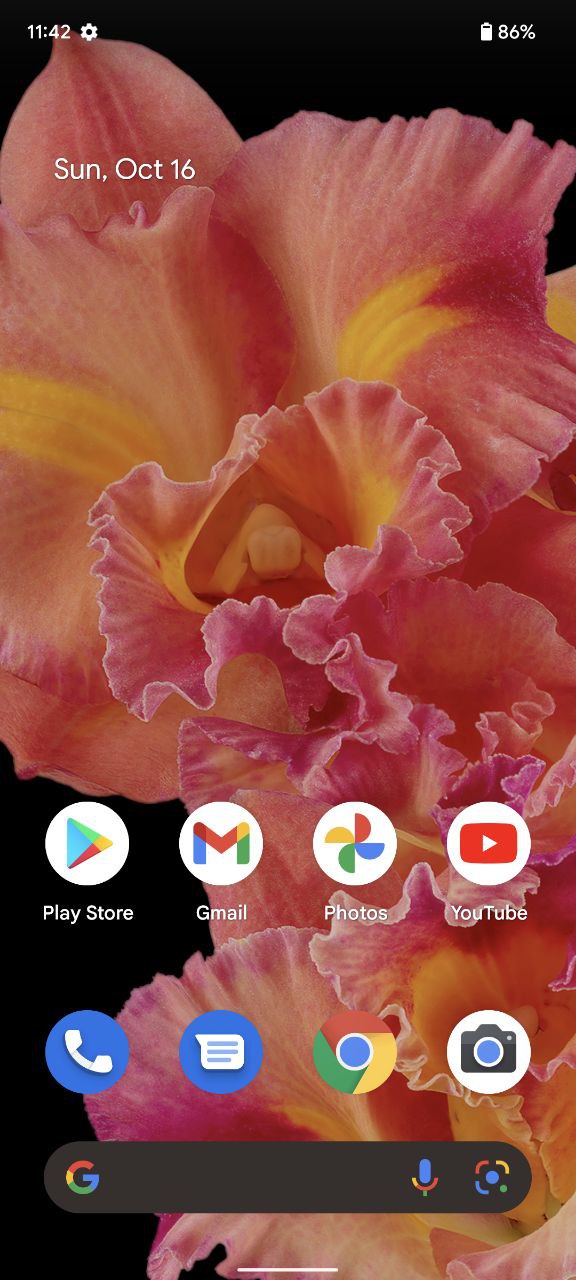
EMUI 12:
EMUI 12 and HarmonyOS share the same typography for battery labels but there’s a difference between them. EMUI 12 shows the percentage label on the left and HarmonyOS on the right. Also, this two software offer you to show battery-level text either inside the battery icon, on the side, or not at all.
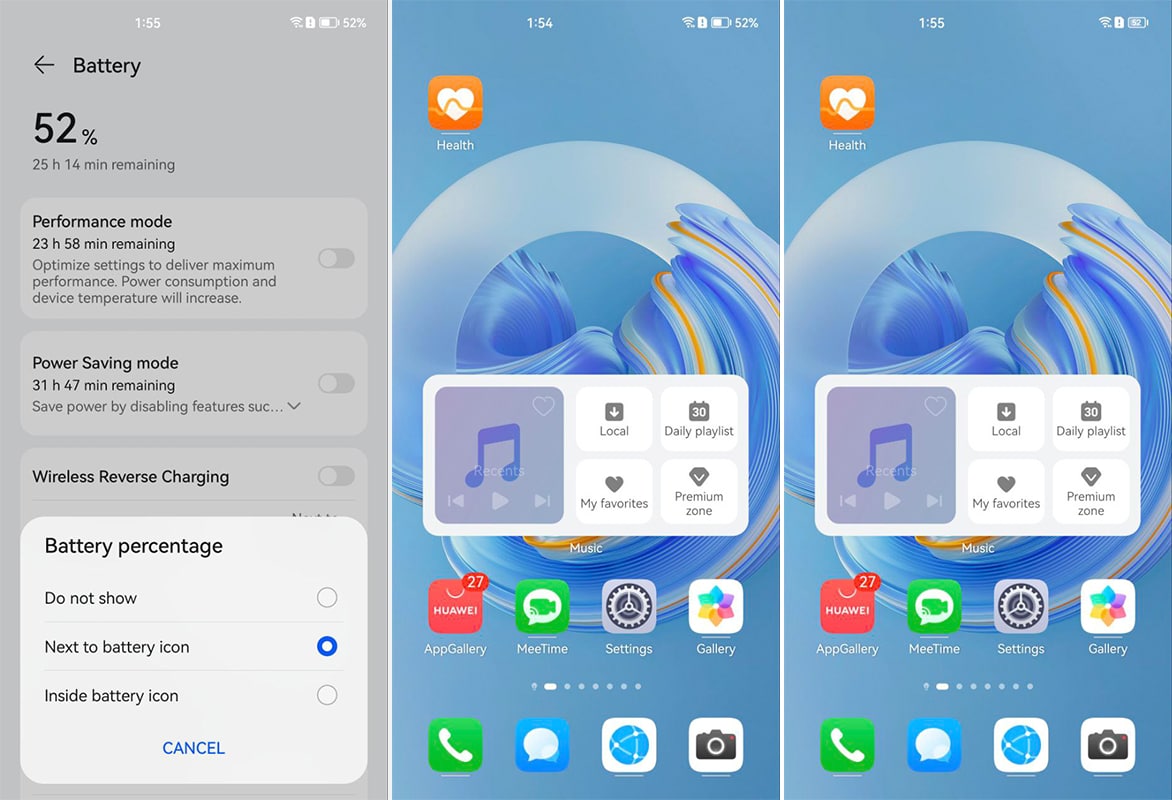
One UI 5:
Samsung also follows Android’s tradition because One UI also comes with a vertical battery icon but a battery percentage level on the left side. It is a decent look-through.
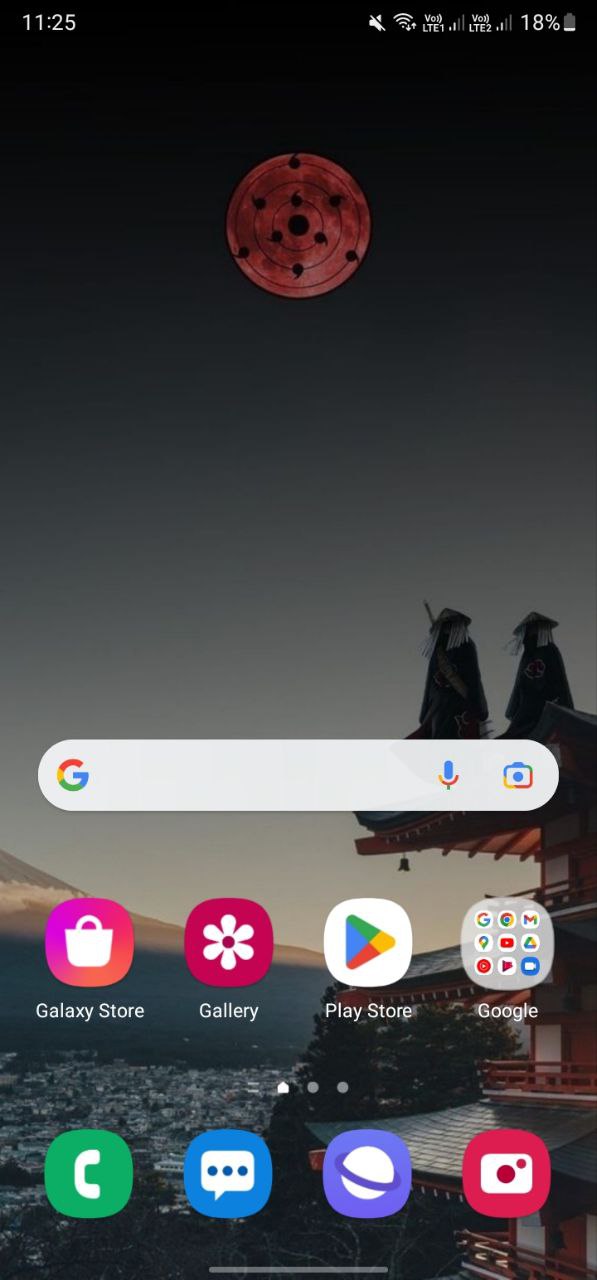
MIUI 13:
Xiaomi MIUI brings you both options to show percentages inside the icon (landscape) or on the right side. But one thing to mention is that its in-icon battery doesn’t clearly show the label.
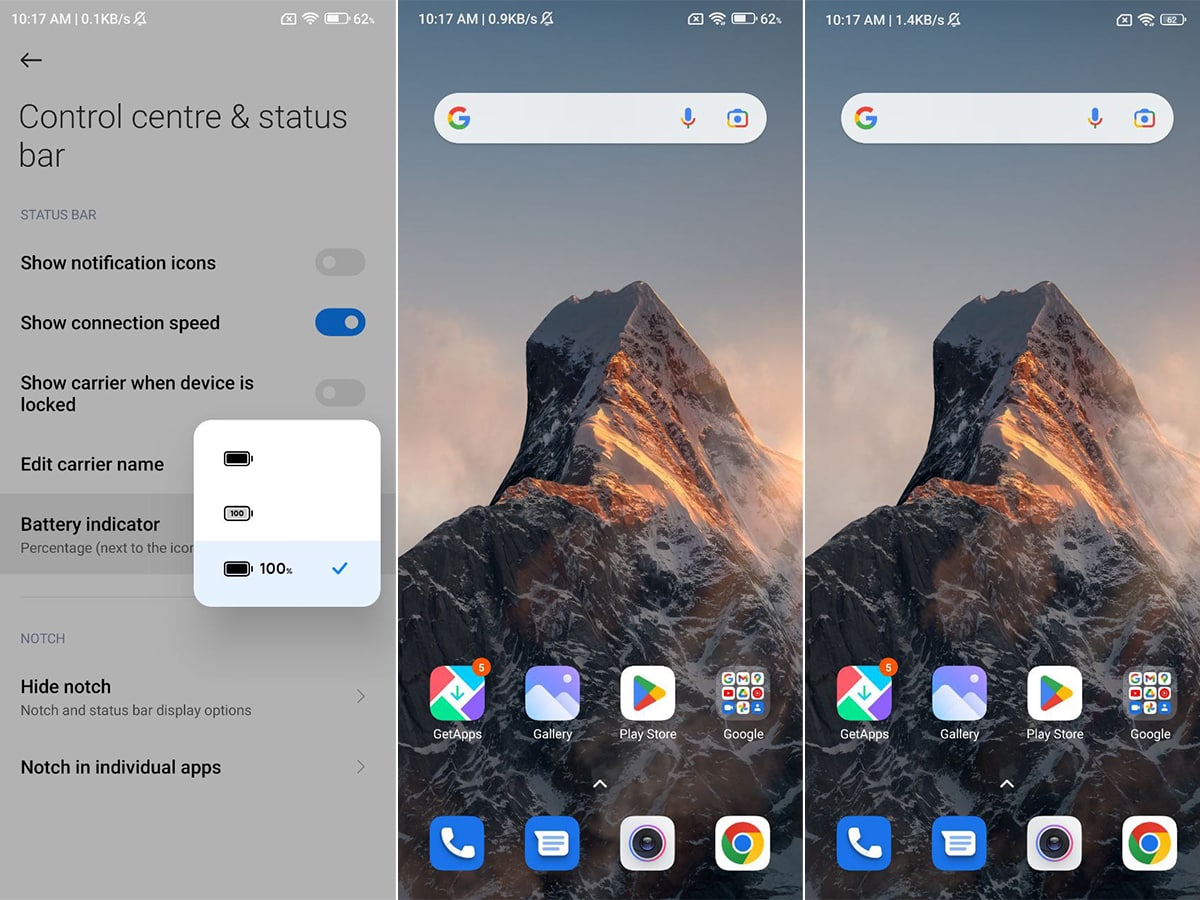
OxygenOS 13:
OxygenOS is quite interesting and comes with more options than any of the above-mentioned contenders to show improve the aesthetics of the battery percentage area.
There are two ways to customize the feature – one for the battery style and battery percentage.
Battery style has:
- Horizontal
- Vertical
- Loop
- Do not show
Percentage style:
- Inside battery icon
- Outside battery icon
- Do not show
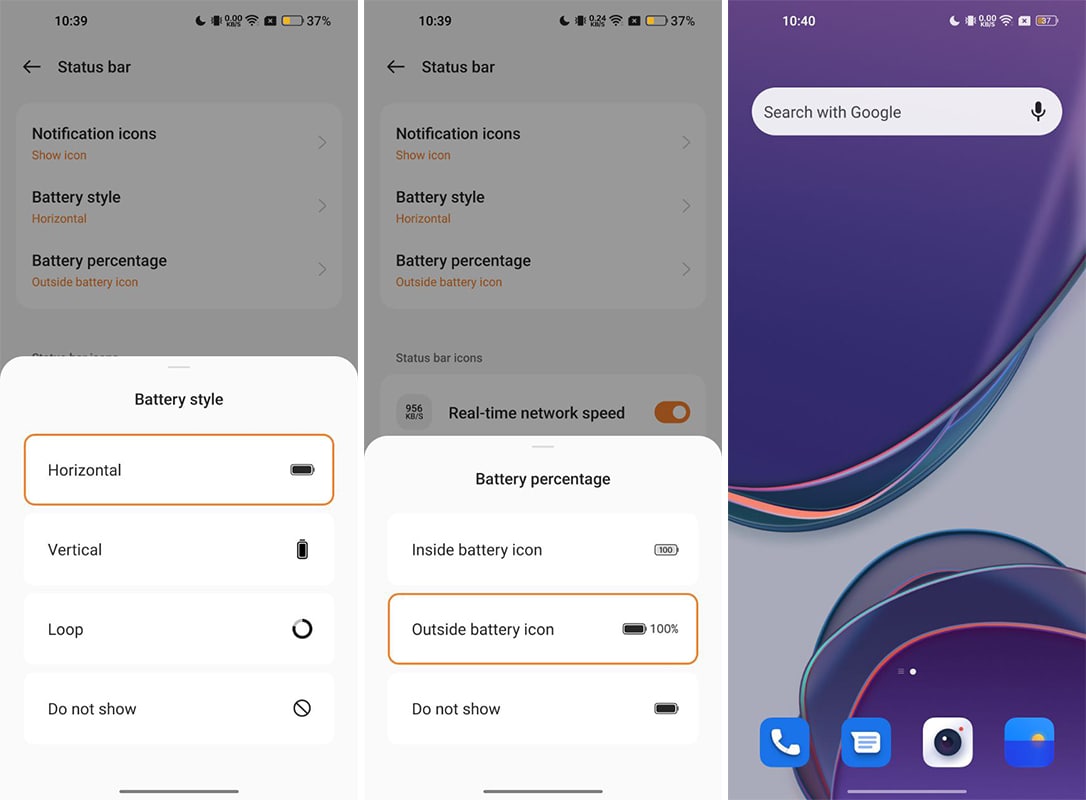
These options make it the most interactive provider of battery percentage settings. However, the appearance still lacks proper visibility for all of the available options.
Winner:
So, which is the winner? It’s iOS 16, followed by HarmonyOS. iOS uses a full-color fill to show the battery percentage inside the icon. Also, the battery icon is a big tall and maintained width as compared to other software. This allows Apple to increase the text size. If the battery level decreases, the battery icon doesn’t decrease the level, which keeps the percentage text visible.
HarmonyOS and EMUI 12 battery percentage visibility is quite good and deserves second place. However, one thing to note is that none of these have a better in-icon label than iOS 16.

Comparison
Samsung Galaxy S23 Ultra vs Huawei Mate 50 Pro: Camera
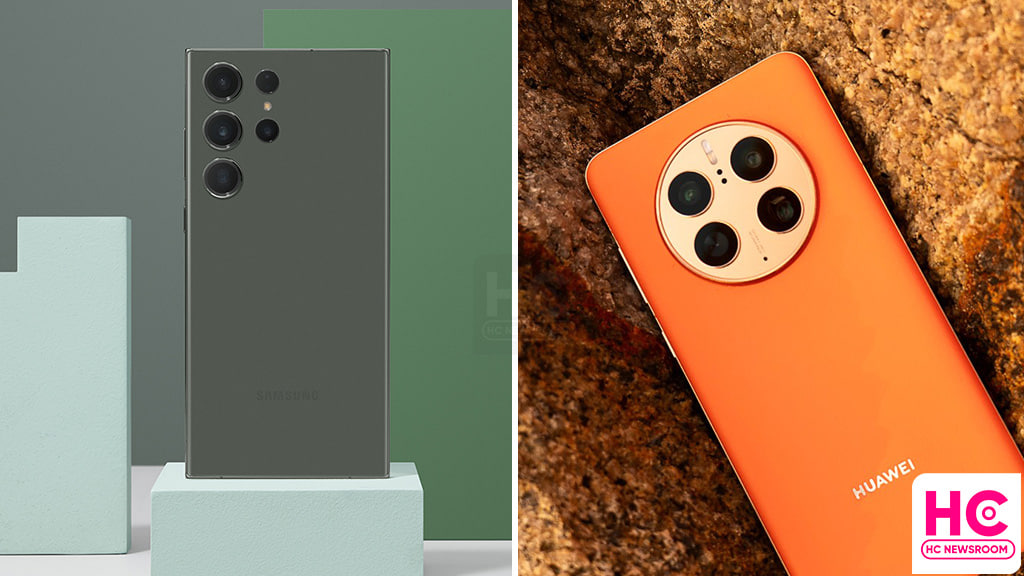
Samsung launched its new Galaxy S23 Ultra, the ultra variant from the S23 lineup, as its name says, the phone is the mightiest in terms of camera numbers and it’s time that we compare this flagship with Huawei Mate 50 Pro in terms of numbers and capability.
Samsung Galaxy S23 Ultra comes with an HP2 sensor inside a 200-megapixel camera with f/1.7 aperture, the number claims high quality with extra light intake. There are various clips to demonstrate Night/low light photography with a small aperture.
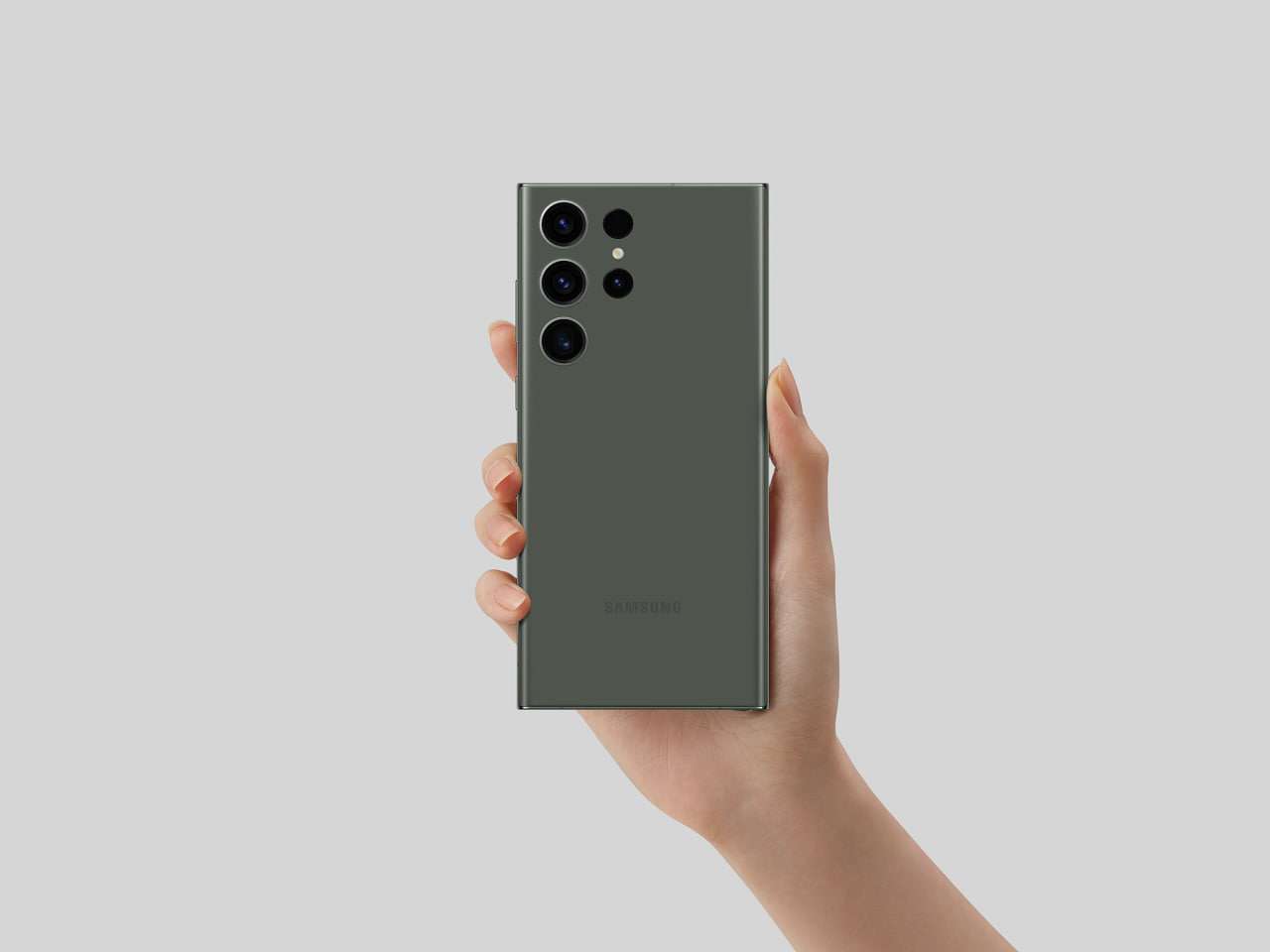
Let’s see Huawei Mate 50 Pro, aside from that 200-megapixel camera, Samsung S23 Ultra doesn’t stand a chance against Huawei Mate 50 Pro’s ultra aperture camera system. Why? Because Huawei is a customized version of the SONY IMX sensor, specially designed for the Mate 50 Pro smartphone.
Although, Mate 50 Pro is not an Ultra model but it comes with an ultra-large f/1.4 aperture that boasts 24% more light with the RYYB color system.
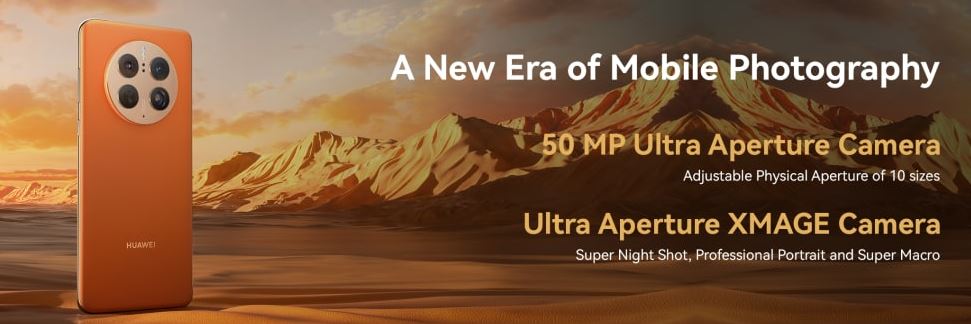
The camera of Mate 50 Pro also provides powerful bokeh shots that really blur the background and highlight the subject with its powerful aperture prowess.
Samsung Galaxy S23 Ultra comes with AI-powered image processing APIs and it could make use of that 200 MP camera system but Huawei Mate 50 Pro could perform image refining tasks even better with its new imaging system called XMAGE.
XMAGE fine-tunes colors and textures, creates vivid contrast, and highlights bright and dark areas to create a first-in-hand impression.
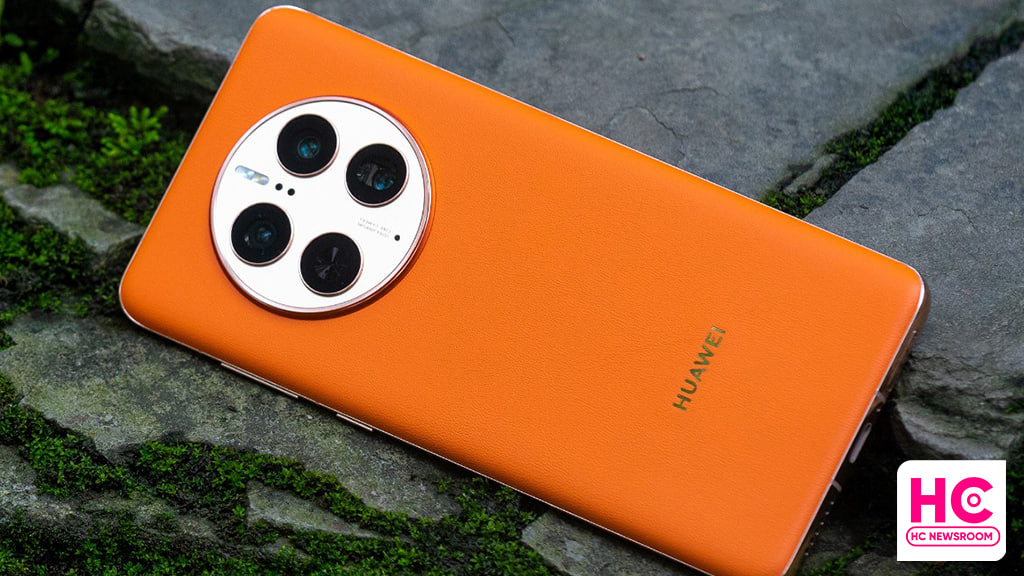
Samsung Galaxy S23 Ultra doesn’t promote the capability to shoot macro but Mate 50 Pro won’t disappoint you, because it has the world’s most powerful macro photography and now a video section that will lead you to the closest to the smallest object in your sight.
Next comes the Ultra wide-angle camera, which counts at 12MP on Galaxy S23 Ultra with f/2.2 aperture and 120-degree field of view. On the other hand, Huawei uses a high-quality 13MP ultra-wide lens to cover all of the group in one picture with identical aperture and FOV.
Samsung Galaxy S23 Ultra has dual telephoto cameras, one is a 10MP optical and another is a 10MP periscope. According to the information, these lenses switch automatically.
The periscope camera has a maximum of 10X optical zoom with f/4.9 aperture. On the other hand, Huawei Mate 50 Pro comes with a 64MP Periscope camera that has an f/3.5 aperture camera that could reach a long-long 10X while maintaining the photo quality.

Comparison
Samsung One UI vs Huawei EMUI: Eye Comfort feature
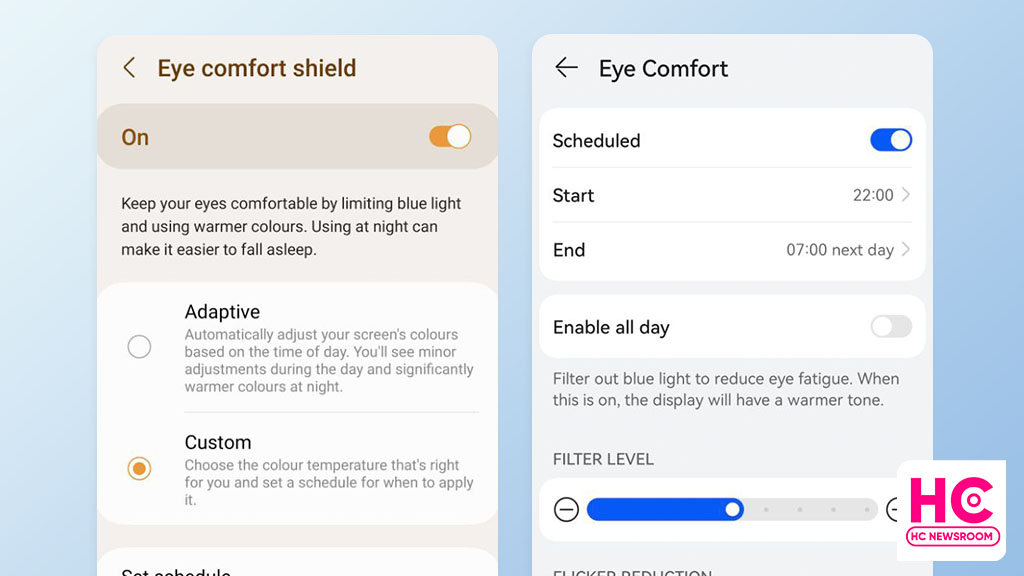
Nowadays, we’re close to our smartphones than ever and this close partnership could bring some eye fatigue powered by Blue light. However, there’s a feature called Eye comfort that is pre-blended on Huawei EMUI to save your eyes, adding to this, we’ll also compare it with the Samsung One UI counterpart.
Although, smartphone makers are enhancing the display panel for the best quality possible but blue light emissions cannot be stopped.
Digital Eyestrain:
Using devices up close or for long periods can lead to digital eyestrain. Research has shown that when people use computers, laptops, and other digital devices, they tend to blink less often than normal. Fewer blinks can mean less moisture. Digital eyestrain means different things to different people but is generally related to the focusing system of the eyes.
Eye comfort:
A blue light filter decreases the amount of blue light displayed on the screen of the device, which can suppress the production of the sleep-inducing hormone, so filtering it out can help you sleep better. It will also help you to reduce digital eye strain.
Coming to the comparison, both Huawei EMUI and Samsung One UI come with eye comfort features and it’s time that we look into the aspects.
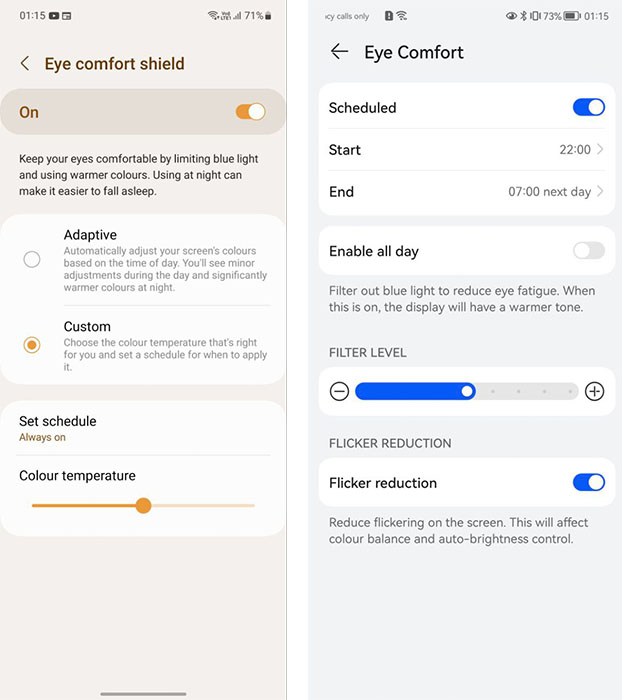
Eye Schedule:
The Eye schedule feature allows you to enable/disable eye comfort with start and end time.
All Day:
Once enabled, the feature overlaps the screen for the entire time until you turn it off manually.
Level:
A slider is available on both software that filters out blue light to reduce eye fatigue, you can slide it left or right to increase/reduce the filter strength.
Flicker reduction:
Only Huawei EMUI comes with a flicker reduction feature, and as the name reflects, the option helps you to reduce flickering on the screen. This will affect color balance and auto-brightness control.
Comparison
Samsung One UI 5 quick settings needs improvements similar to EMUI 12
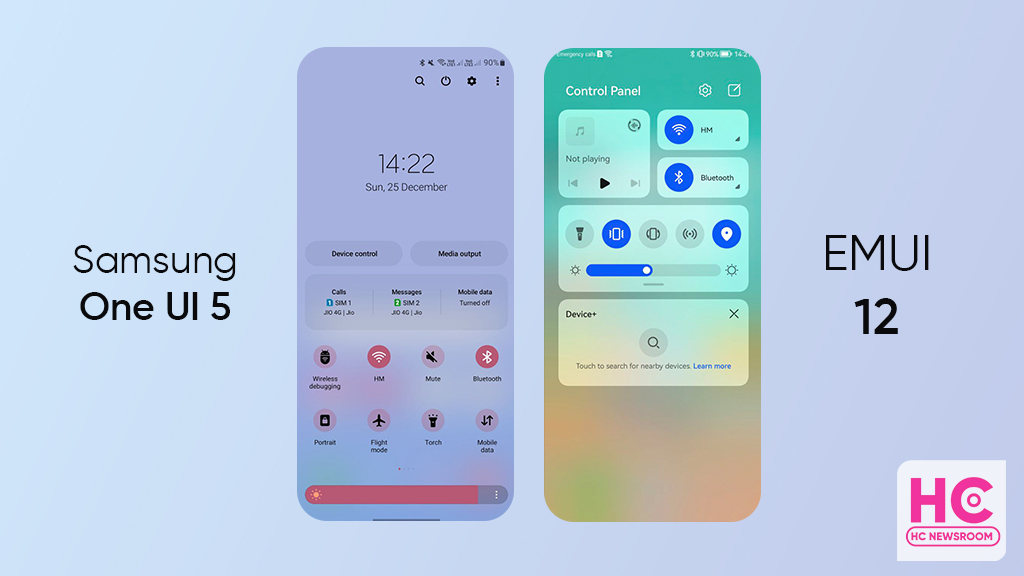
Samsung One UI 5 is the latest mobile software based on Android 13 but the software is making slow progress for a better user experience as compared to Huawei EMUI 12.
One UI 5 is one of the most low-approved software and it lacks innovation as well as smoothness. Don’t take my word for it, if you have a Samsung phone, you may like it ‘a bit’ but if you have a Huawei phone or even an iPhone then, you may want Samsung to kick in some new efforts.
Currently, Samsung is busy sending One UI 5 software to old devices. As compared to One UI 4.1, Samsung has made some changes in the user interface and a few in the features section. However, these changes are teeny tiny on the surface.
For instance, Samsung One UI 5 quick settings are similar to One UI 4.1. There is a small change that is powered by Android 13’s Material You design and the rest of the UI and functionality remain the same.
To access One UI 5 quick settings, you can swipe down from the top and swipe again to open the full panel. On the top tray, you will get key features of search, power, and settings, as well as edit.
Followed by a large space for time and date and followed by device control and media output manager. The bottom section includes SIM manager options, quick access icons, and a brightness slider. These are the same old features that were available in One UI 4.1.
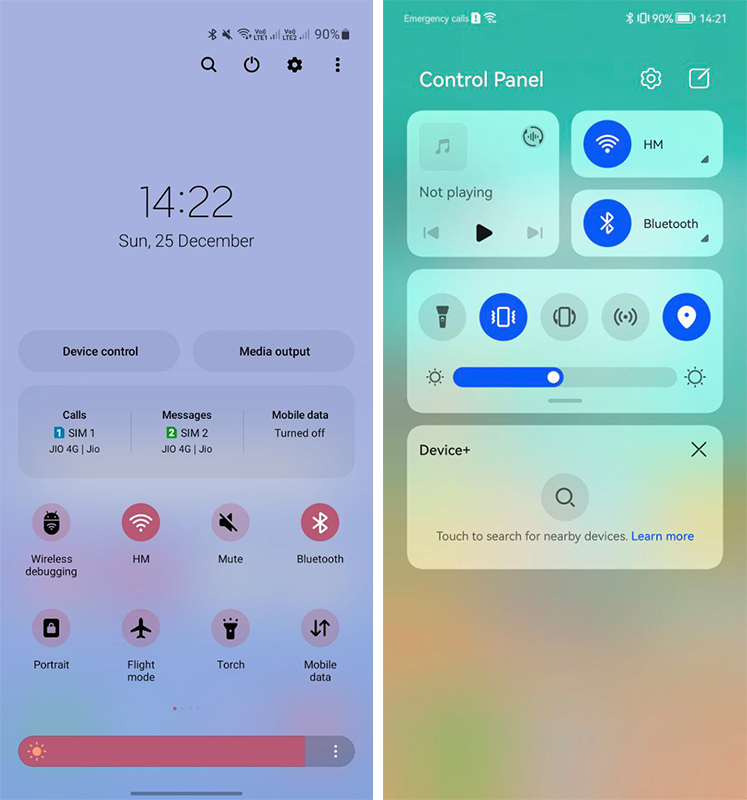
On the other hand, EMUI 12 renovated the user experience for Huawei smartphone users. The Control Panel (quick settings) combines a number of new features and services that weren’t there before.
The control panel brings simplicity at hand. Starting from the top section, the phone could use it to control WiFi, Bluetooth connected device way better than One UI 5. There’s a media controller that will allow you to manage playback
Do you think that’s the end of the story? Nope, because Huawei EMUI 12 quick settings enable audio projection to broadcast music on different devices all at once.
The EMUI 12 control panel has quick settings icon section, which has big dials than Samsung One UI 5. Talking about creativity, EMUI 12 further outshines One UI 5 with its Super Device and Smart Device controllers.
Samsung is free to brag about smartphone sales in the global market but when it comes to features and user experience, One UI 5 is still far away.
What do you think, Samsung One UI 5 has better quick settings or EMUI 12? Let us know via the tweet below.
Samsung One UI 5 Quick Settings (COMMENT) vs Huawei EMUI 12 Control Panel (LIKE) pic.twitter.com/qhtPI43U67
— HC Newsroom (@HCNewsroom) December 25, 2022



